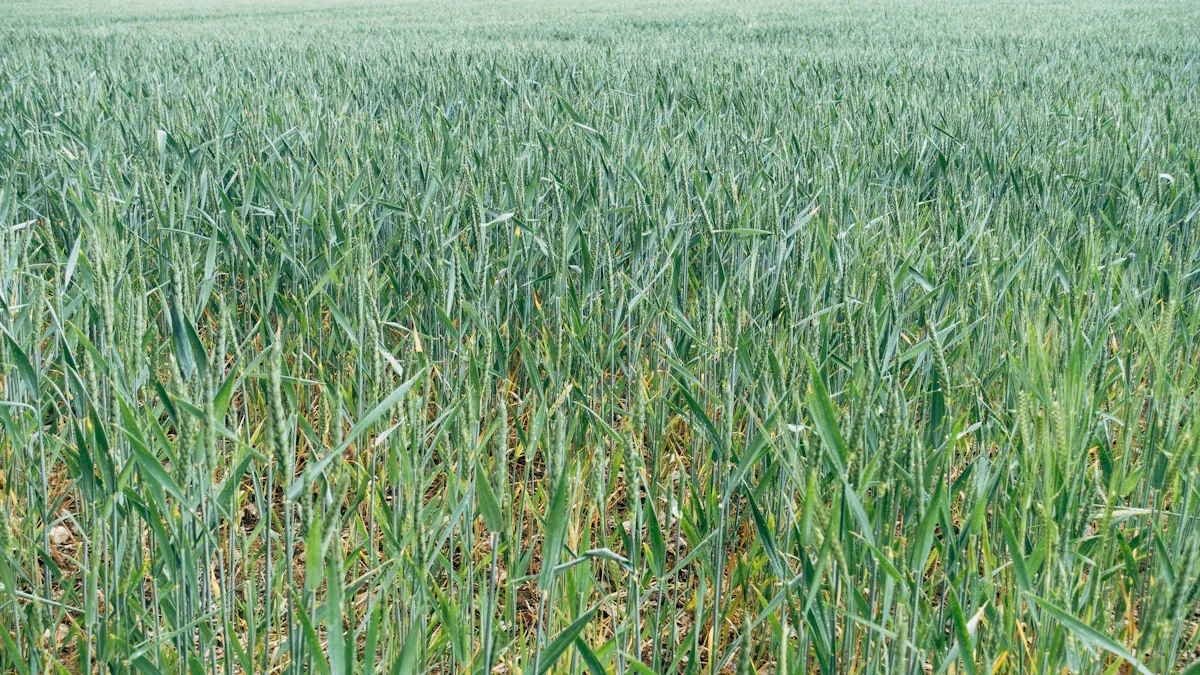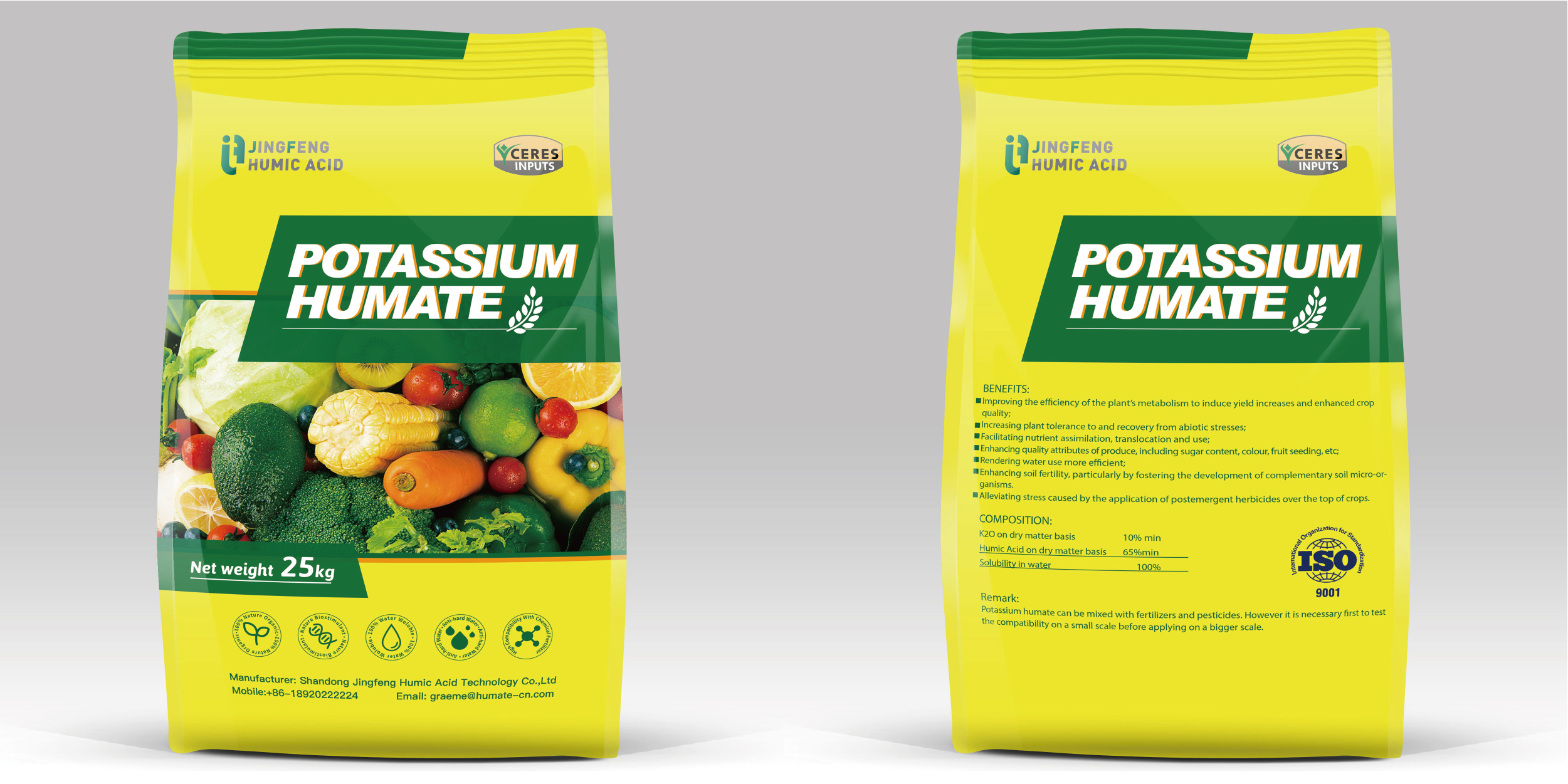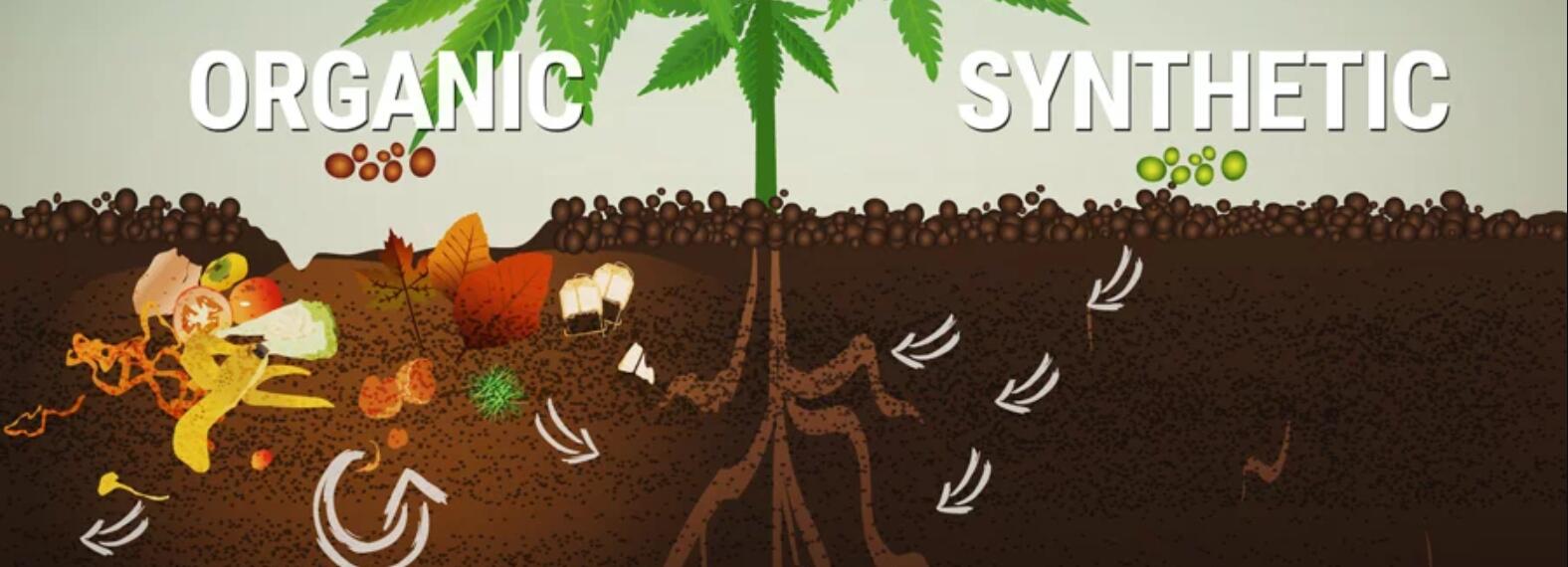
You play a crucial role in shaping the future of farming when you choose humic acids in sustainable agriculture. Recent studies reveal that humic acids not only enhance soil structure and water retention but also boost beneficial microbes, supporting plant growth even under drought. As the global demand for sustainable farming grows, you see more farmers adopting these practices to improve yields and soil health while advancing environmental sustainability.
Key Takeaways
- Humic acids improve soil structure by helping soil particles stick together, which supports root growth and water movement.
- They increase the soil’s ability to hold nutrients and water, making crops stronger and more drought-resistant.
- Humic acids boost beneficial microbes in the soil, which helps break down organic matter and cycle nutrients.
- Using humic acids reduces the need for chemical fertilizers by improving nutrient uptake and preventing nutrient loss.
- Applying humic acids lowers harmful greenhouse gas emissions like nitrous oxide and methane, helping protect the climate.
- Humic acids enhance crop yields and quality by supporting plant health, stress tolerance, and nutrient density.
- You can apply humic acids to soil or as foliar sprays, with timing at planting and key growth stages for best results.
- Humic acids support sustainable farming by improving soil, crop, animal health, and reducing environmental impacts.
Humic Acids Overview
Definition
You encounter humic acids as the most abundant organic substances in healthy soils. These complex molecules form through the microbial decomposition of plant and animal matter. Humic acids contain a variety of functional groups, such as carboxylic, phenolic, and hydroxyl groups. These groups give humic acids their unique chemical properties, including acidity, ion exchange, and the ability to form stable complexes with nutrients. Recent research uses advanced techniques like UV-Vis spectroscopy and X-ray diffraction to confirm the diverse structure of humic acids. For example, scientists have measured the average crystal size of humic acid molecules at about 39 nanometers. This diversity allows humic acids to interact with soil minerals, water, and living organisms, making them essential for soil health and plant nutrition.
Tip: When you add humic acids to your soil, you introduce a powerful natural tool that supports both immediate plant growth and long-term soil vitality.
Here is a summary of the composition and benefits of humic acids in regenerative farming:
| Aspect | Evidence Summary |
|---|---|
| Composition | Humic acids and fulvic acids are complex natural organic substances derived from decomposed plant and animal matter. They contain functional groups like alcohol, phenol, aldehyde, carbonyl, ketone, quinone, peptide, and nitrogen-containing groups. |
| Benefits in Regenerative Farming | – Improve soil structure and aeration – Increase cation exchange capacity – Enhance water holding capacity – Stimulate root development – Promote nutrient uptake – Increase plant growth, yield, and stress resistance – Support microbial activity – Reduce toxins and heavy metals – Improve fertilizer efficiency – Stabilize nitrogen and complex phosphates – Enhance seed germination and vigor |
| Commercial Products | Examples: KHUMIC-100, LIQHUMUS® Liquid 18, Turbo Root, HUMAC® Agro. These products help regulate soil pH, reduce toxins, stimulate microbes, and improve plant resilience. |
| Broader Context | The One Health framework connects humic acids to benefits for human, animal, and environmental health, highlighting their sustainable role in agriculture. |
Role in Soil
You improve your soil’s physical and chemical properties when you use humic acids. These substances enhance soil aggregation, which means soil particles stick together better. This process creates stable soil structure, allowing roots to penetrate more easily and water to move efficiently. Humic acids also increase the soil’s cation exchange capacity. This property helps your soil hold onto essential nutrients like potassium, phosphorus, and micronutrients, making them more available to your crops. Scientific studies show that humic acids stimulate root growth and nutrient uptake by activating root enzymes and mimicking plant hormones. You also benefit from improved water retention, which helps your crops withstand dry periods. By supporting beneficial microbes, humic acids create a thriving soil ecosystem that breaks down organic matter and cycles nutrients.
Importance for Regeneration
You drive soil regeneration when you incorporate humic acids into your farming system. These natural substances:
- Improve soil structure, making soils healthier and more stable.
- Increase organic matter content, which supports fertile, living soils.
- Stimulate beneficial microbial activity, aiding nutrient cycling and plant protection.
- Reduce soil erosion by binding soil particles and preserving topsoil.
- Enhance water retention, helping soils hold moisture during drought.
- Boost nutrient availability and uptake, reducing the need for chemical fertilizers.
- Strengthen plant resilience against drought, salinity, and temperature extremes.
- Support sustainable, organic, and regenerative farming practices.
You see long-term benefits, such as higher crop yields, improved soil fertility, and greater resilience to environmental stress. By choosing humic acids, you invest in a regenerative approach that sustains your land and supports future generations.
Soil Health Benefits

Structure Improvement
Aggregation
You transform your soil’s structure when you apply humic acids. These natural compounds bind soil particles together, forming stable aggregates. This process improves soil texture and creates a crumbly, porous environment where roots can grow freely. Scientific studies show that humic acid-based amendments enhance soil aggregation, prevent erosion, and increase carbon storage. As a result, you see better soil fertility and improved nutrient uptake by your crops. When you restore barren or degraded soils with humic acids, you boost the fertilizer utilization rate and promote sustainable soil management. In a three-year field experiment with continuous peanut cropping, researchers found that humic acid significantly increased soil organic matter and enzyme activities, such as urease and sucrase. These changes led to better soil aggregation and a remarkable 78% increase in peanut yield compared to untreated soil.
Note: Improved aggregation not only supports plant growth but also helps protect your soil from compaction and runoff.
Water Retention
You notice a clear difference in your soil’s ability to hold water after using humic acids. The improved aggregation creates more pore spaces, allowing the soil to absorb and retain moisture efficiently. This means your crops receive a steady supply of water, even during dry periods. Enhanced water retention reduces the need for frequent irrigation and helps your plants withstand drought stress. By maintaining optimal moisture levels, you support healthy root development and minimize the risk of water loss through evaporation or runoff.
Microbial Activity
Beneficial Microbes
You foster a thriving community of beneficial microbes when you introduce humic acids into your soil. These substances alter the physical and chemical properties of the soil, making nutrients more available to plants and microbes alike. Research shows that humic acids increase the abundance of helpful bacteria such as Bradyrhizobium and Actinobacteria, which play key roles in nitrogen fixation and organic matter decomposition. At the same time, humic acids suppress harmful microbes, including plant pathogens like Xanthobacteraceae. This shift in the microbial community supports nutrient cycling and boosts plant health.
- Humic acids enhance the diversity and number of beneficial bacteria and fungi.
- They promote the growth of genera like Mycobacterium and Crossiella, while reducing harmful species.
- The improved microbial network increases soil stability and resilience.
Organic Matter
You increase the organic matter content of your soil with regular humic acid application. Humic acids serve as a food source for soil microbes, providing reducing sugars, organic acids, and amino acids. This stimulates microbial metabolism and accelerates the breakdown of plant residues. As microbes decompose organic material, they release nutrients that become available to your crops. Enhanced enzyme activities, such as alkaline phosphatase, further support nutrient cycling and soil fertility. Over time, you build a rich, living soil that sustains healthy plant growth and supports regenerative farming practices.
Tip: By focusing on both soil structure and microbial life, you lay the foundation for resilient, productive fields that thrive season after season.
Nutrient Cycling
Cation Exchange
Nutrient Availability
You boost nutrient availability in your soil when you apply humic acids. These natural compounds contain ionizable functional groups that increase the soil’s cation exchange capacity (CEC). With higher CEC, your soil holds onto essential nutrients such as potassium, ammonium, and calcium, making them more accessible to your crops. Humic acids also act as natural chelators, binding trace metals and nutrients so plants can absorb them efficiently. As a result, you see improved plant growth, stronger root systems, and better yields.
Tip: Humic acids stimulate root activity and soil enzymes, which lower rhizosphere pH and enhance nitrate uptake. This process increases nitrogen use efficiency and supports healthy crop development.
Here’s how humic acids impact nutrient retention and plant growth:
| Parameter | Without Humic Acid | With Humic Acid |
|---|---|---|
| Total Potassium (K+) | Lower | Higher |
| Exchangeable K+ | Lower | Higher |
| Ammonium (NH4+) Storage | Lower | Higher |
| Phosphorus (P) Fixation | Higher | Lower |
| Plant Growth (Biomass) | Less | More |
Leaching Prevention
You reduce nutrient loss from your fields by using humic acids. These substances improve soil structure, breaking up compacted layers and increasing porosity. Better structure means water moves through the soil more evenly, carrying fewer nutrients away. Humic acids also bind nutrients, preventing them from leaching out of the root zone during heavy rains or irrigation. This process keeps valuable fertilizers in place, saving you money and protecting the environment from runoff pollution.
- Humic acids increase soil CEC, holding nutrients in the root zone.
- They buffer soil pH, further stabilizing nutrient availability.
- You see less fertilizer waste and more consistent crop nutrition.
Straw Mulch Integration
Decomposition
You accelerate the breakdown of straw mulch when you combine it with humic acids. These acids act as natural nutrient-recycling agents, helping soil microbes decompose organic residues. As straw mulch breaks down, humic acids adsorb and bind organic substrates, releasing nutrients like nitrogen in a slow, controlled manner. This process improves soil fertility and ensures a steady supply of nutrients for your crops throughout the growing season.
- Humic acids enhance mineralization, making nutrients from straw mulch available to plants.
- They support beneficial microbes that drive decomposition and nutrient cycling.
Reduced Fertilizer Use
You can cut back on synthetic fertilizers by integrating humic acids with straw mulch. As humic acids promote the gradual release of nutrients from decomposing mulch, your crops receive a continuous nutrient supply. This slow-release effect reduces the need for frequent fertilizer applications and lowers input costs. Studies confirm that humic acids replenish soil fertility by recycling organic matter, supporting sustainable nutrient management.
Note: By using humic acids with straw mulch, you create a self-sustaining system that builds soil health, conserves resources, and supports regenerative farming goals.
Humic Acids in Sustainable Agriculture
Emission Reduction
You play a vital role in reducing greenhouse gas emissions when you use humic acids in sustainable agriculture. These natural substances help you address two of the most potent greenhouse gases: nitrous oxide and methane. By supporting beneficial microbial activity, humic acids create conditions that lower emissions from your fields and livestock operations.
Nitrous Oxide
You can significantly cut nitrous oxide emissions by applying humic acids in sustainable agriculture. Nitrous oxide (N2O) is a powerful greenhouse gas, often released from fertilized soils. When you use humic acids as nitrification inhibitors in your fertilizers, you slow down the conversion of ammonium to nitrate. This process reduces the amount of N2O released into the atmosphere.
- Wetland sediment microbiota reduced nitrous oxide at a rate of about 4.6 ± 0.5 μmol N2O per gram of sediment per day when humic substances acted as electron donors.
- Humic acids used in fertilizers can reduce nitrous oxide emissions by up to 99%.
- You see these reductions both in laboratory studies and in real-world agricultural settings.
Tip: By choosing humic acids in sustainable agriculture, you help protect the climate while maintaining soil fertility.
Methane
You also lower methane emissions when you incorporate humic acids in sustainable agriculture. Methane (CH4) comes from both soil and livestock sources. Humic acids act as electron shuttles, supporting microbes that oxidize methane and reduce its release.
- Simultaneous oxidation of methane occurred at a rate of 1.3 ± 0.1 μmol 13CO2 per gram of sediment per day, linked to N2O reduction at 25.2 ± 0.5 μmol N2O per gram of sediment per day.
- The stoichiometric ratio of N2O reduced to 13CO2 produced was 0.43, showing that 43% of methane oxidized was coupled to N2O reduction with humic substances.
- Methane and other harmful gas emissions drop by up to 99% when you apply humic acids.
You create a more climate-friendly farm by supporting these natural processes.
Environmental Impact
Humic acids in sustainable agriculture offer benefits beyond emission reduction. You improve water quality and reduce odors, making your farm more sustainable and community-friendly.
Water Quality
You protect water resources when you use humic acids in sustainable agriculture. These substances bind nutrients and heavy metals, preventing them from leaching into groundwater or running off into nearby streams. As a result, you reduce the risk of water pollution and help maintain clean water for your community.
- Humic acids increase soil’s ability to hold nutrients, keeping them available for crops and out of waterways.
- You see less fertilizer runoff, which means fewer algal blooms and healthier aquatic ecosystems.
Note: Cleaner water benefits both your farm and the surrounding environment.
Odor Control
You notice a dramatic reduction in unpleasant odors when you treat manure or slurry with humic acids in sustainable agriculture. These substances neutralize volatile compounds and support microbial communities that break down organic matter more efficiently.
- Odor units from slurry treated with humic acids drop by 75% within hours.
- You create a more pleasant environment for workers, neighbors, and livestock.
By adopting humic acids in sustainable agriculture, you address key environmental challenges while improving your farm’s productivity and reputation. Field studies and real-world applications confirm that these natural substances help you achieve measurable reductions in greenhouse gas emissions, protect water quality, and control odors. You make a positive impact on both your land and the planet.
Crop Performance

Yield Increase
Field Trials
You see measurable improvements in crop yields when you apply humic acids. Field trials in Egypt with the humic acid-based product POWHUMUS® demonstrated significant increases in both yield per plant and average potato size. Treated plants showed no external signs of salt stress, such as yellow salt edges, which often appear in untreated controls. This effect results from humic acids’ ability to chelate harmful salt cations like calcium and manganese, reducing salt stress and making nutrients more available near the roots. You also benefit from improved soil structure and nutrient uptake, which enhances fertilizer efficiency and reduces nutrient leaching.
- Humic acids act as soil conditioners, stimulating potato growth and yield.
- Application before sowing helps young tubers meet nutrient demands and promotes faster root growth.
- Humic acids bind phosphorus near roots, ensuring optimal phosphate supply after planting.
- Under heat and drought stress, humic acids make essential minerals more available, supporting yield stability.
Field studies on coffee confirm these results. When you combine soil and foliar applications of humic acid with recommended fertilizers, you see significant improvements in yield attributes such as total nodes per branch, flower buds, fruit number, and fruit set percentage. These improvements remain consistent across multiple seasons, confirming the value of humic acids for yield and quality.
Stress Tolerance
You strengthen your crops’ resilience to environmental stress by using humic acids. Field trials across diverse climates show that humic acids help plants withstand drought, heat, and salinity. These trials use advanced monitoring techniques like drone flights and plant tissue analysis to measure improvements in growth and stress resistance. You gain confidence knowing that humic acids support crop performance under both protected and open field conditions, from Europe to Brazil and Kenya.
Tip: Humic acids help your crops adapt to changing weather and soil conditions, ensuring stable yields year after year.
Quality Improvement
Nutrient Density
You enhance the nutritional value of your crops with humic acid applications. Studies show that humic substances increase key enzyme activities involved in nitrogen metabolism, such as glutamine synthetase and glutamate synthase, by up to 65% and over 170% respectively. These biochemical changes improve nutrient assimilation and support higher nutrient density in your harvest. For example, lettuce treated with humic acid showed significantly improved nitrogen content, even when yield did not increase directly.
- Foliar application of humic acids boosts nutrient uptake, including nitrogen and iron.
- Crops treated with humic acids display higher chlorophyll content and improved enzyme activities related to nutrient assimilation.
Plant Health
You promote robust plant health and resilience by integrating humic acids into your management practices. Humic acids stimulate beneficial soil microorganisms, increase nutrient availability, and activate plant metabolic pathways. These effects lead to better resistance against pests and diseases, as well as improved growth and biochemical characteristics.
- Field experiments show increased plant height, cover index, chlorophyll, carotenoid content, and total sugars in treated crops.
- Humic acids act as biostimulants, supporting overall plant vigor and quality.
You build a foundation for sustainable, high-quality crop production by choosing humic acids. Field trials and scientific research confirm their effectiveness in improving both yield and quality, making them a valuable tool for regenerative farming.
Application Methods
Soil Application
You achieve the best results when you apply humic acids directly to the soil. This method works well for improving nutrient uptake, especially in soils with low organic matter or high salinity. Humic acids act as powerful bio-stimulants, enhancing root growth and increasing the availability of key nutrients like nitrogen, phosphorus, and potassium. You can combine humic acids with phosphorus fertilizers at rates as low as 50% of the recommended dose. Research shows that this combination boosts nutrient uptake in crops such as barley by up to 66% compared to using phosphorus alone. You also see improved yields and stronger plants, even under stress conditions.
Tip: Apply humic acids to sandy or reclaimed soils to reduce your reliance on chemical fertilizers and support sustainable crop production.
When you plan your soil application, consider these steps:
- Mix humic acid granules or liquid concentrates into the soil before planting.
- Combine with organic fertilizers or compost for a synergistic effect.
- Adjust phosphorus fertilizer rates downward when using humic acids to maximize efficiency.
Many organic-certified products, such as KHUMIC-100 and HUMAC® Agro, fit seamlessly into regenerative and organic farming systems.
Foliar Application
You can also apply humic acids as a foliar spray to deliver nutrients directly to plant leaves. This method stimulates cell permeability and activates metabolic pathways, leading to better nutrient absorption and improved plant health. Foliar application increases chlorophyll content, boosts antioxidant defenses, and supports the synthesis of growth-promoting hormones. You notice greener leaves, stronger stems, and higher nutritional quality in your crops.
| Benefit | Description |
|---|---|
| Nutrient Uptake | Enhanced absorption of potassium, nitrogen, phosphorus, and zinc |
| Plant Health | Increased chlorophyll, enzyme activity, and antioxidant capacity |
| Application Technique | Use wetting agents to improve adhesion and prevent runoff |
For best results, spray humic acids during early morning or late afternoon to avoid leaf burn. Use adhesion enhancers to help the solution stick to leaves, especially during windy or rainy conditions. Foliar sprays work well in combination with soil applications, especially when plants show signs of nutrient deficiency or stress.
Timing
You maximize the benefits of humic acids by applying them at the right time. Field studies show that a single application at the start of the growing season leads to dramatic improvements in soil fertility and crop productivity. For example, applying humic substances at planting increased available phosphorus by 63% and potassium by 96%, resulting in up to 749% more biomass in alfalfa. You should target your first application just before or at planting, then follow up with foliar sprays during key growth stages.
Note: Proper timing ensures that your crops receive nutrients when they need them most, supporting vigorous growth and higher yields.
By integrating humic acids into your soil and foliar management plans, you create a resilient, productive, and sustainable farming system.
Food and Health Impact
Nutritional Value
You improve the nutritional quality of your crops when you use humic acids in your farming system. Scientific research shows that crops like triticale and wheat respond with higher protein and glucose levels after treatment with humic and fulvic acids. These improvements result from enhanced nutrient absorption and stronger root systems, even under challenging conditions such as soil salinity. For example, studies report statistically significant increases in forage production, grain yield, and 1000-grain weight. Humic acids stimulate the biosynthesis of plant hormones like auxin and cytokinin, which leads to better root architecture and more efficient nutrient uptake. As a result, you harvest grains with improved biochemical composition and higher nutritional value. This means your produce not only looks better but also delivers more essential nutrients to consumers.
Tip: By choosing humic acids, you help your crops reach their full nutritional potential, supporting healthier diets for your community.
Microbiome Support
You foster a balanced and resilient soil microbiome when you apply humic acids. These natural compounds increase the abundance of beneficial microbes around plant roots and reduce the presence of harmful ones. As a result, you create a stable microbial network that supports nutrient cycling and plant health. Humic acids also boost soil enzyme activity, which helps break down organic matter and release nutrients for plant uptake. You notice that your fields become more productive and resistant to disease because the soil microbiome remains diverse and robust. This microbial balance not only benefits your crops but also contributes to long-term soil fertility.
- Humic acids enhance microbial diversity and community structure.
- They act as slow-release organic fertilizers, increasing soil nitrogen, phosphorus, potassium, and organic matter.
Note: A healthy soil microbiome leads to healthier plants and more sustainable yields.
Animal Welfare
You support animal welfare when you use humic acids as part of your regenerative farming approach. Healthier soils and nutrient-rich crops provide better feed for livestock, which can improve animal health and productivity. When you reduce the need for chemical fertilizers and pesticides, you also lower the risk of harmful residues entering the food chain. Animals grazing on pastures treated with humic acids benefit from improved forage quality and a more natural diet. You create a safer, cleaner environment for your animals, which supports their well-being and reduces stress.
| Benefit for Animals | Description |
|---|---|
| Improved Feed Quality | Nutrient-dense forage supports animal health |
| Cleaner Environment | Fewer chemical residues and better soil quality |
| Lower Stress | Natural diets and healthier pastures |
By integrating humic acids into your farming system, you promote food quality, soil health, and animal welfare—all essential pillars of regenerative agriculture.
You unlock powerful results when you choose humic acids in sustainable agriculture. These natural compounds transform your soil, boost crop resilience, and improve the nutritional value of your harvest. For example, regenerative farming with humic acids produces beef with 300% more omega-3 fatty acids and pork with up to 11 times more alpha-linolenic acid compared to conventional methods:
| Product Type | Nutrient | Increase in Regenerative Farming Compared to Conventional |
|---|---|---|
| Beef | Omega-3 Fatty Acids | 300% more |
| Beef | Alpha-Linolenic Acid (ALA) | Over 6 times more |
| Pork | Omega-3 Fatty Acids | 9 times more |
| Pork | Alpha-Linolenic Acid (ALA) | 11 times more |
| Pork and Beef | Omega-6 Fatty Acids | Reduced by 200-300% |
You see healthier soils, stronger plants, and better food. Start using humic acids in sustainable agriculture to build a thriving, resilient farm for the future.
FAQ
What are humic acids and how do they work in soil?
Humic acids are natural organic molecules from decomposed plant and animal matter. You add them to soil to improve structure, boost nutrient retention, and stimulate beneficial microbes. These actions help your crops grow stronger and healthier.
Can you use humic acids with organic farming practices?
Yes, you can use humic acids in organic systems. Many certified products fit organic standards. You combine them with compost or organic fertilizers to enhance soil fertility and crop performance.
How often should you apply humic acids to your fields?
You typically apply humic acids at planting and during key growth stages. For best results, follow product guidelines. You may need to adjust frequency based on soil type, crop, and climate.
Do humic acids replace chemical fertilizers?
You do not replace all fertilizers with humic acids. Instead, you use them to improve fertilizer efficiency and reduce overall input needs. Humic acids help your soil hold nutrients longer, so you can often lower fertilizer rates.
Are there visible signs that humic acids are working?
You notice improved soil texture, better water retention, and healthier root systems. Your crops may show greener leaves, faster growth, and higher yields. Over time, you see more earthworms and beneficial microbes in your soil.
Are humic acids safe for people, animals, and the environment?
Yes, humic acids are safe when you use them as directed. They come from natural sources and do not harm people, animals, or beneficial insects. You support a healthier ecosystem by choosing humic acids.
Can you apply humic acids as a foliar spray?
You can apply humic acids as a foliar spray. This method delivers nutrients directly to leaves, improving nutrient uptake and plant health. Use wetting agents for better adhesion and apply during cooler parts of the day.
What crops benefit most from humic acid application?
You see benefits in a wide range of crops, including grains, vegetables, fruits, and forage. Humic acids support root growth, nutrient uptake, and stress tolerance in most plants. You can tailor application rates to your specific crop needs.






